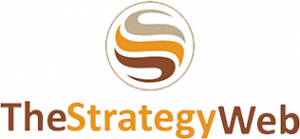How the Edgerank drives your Facebook marketing (Infographic)
Many people might have heard about the EdgeRank that drives the Facebook algorithm. It is the basis for the relevance of accounts and status updates, and yes obviously the users. However, how does it work is still an unchallenged question…
The aim of the Facebook Edgerank is to detect the updates people are most likely to engage with. One of the reasons why we sometimes don’t see our friends but those who are sharing updates that other people might like a bit more than others.
Some social experts suggest different types of posts that generate most traffic and engagement. Some believe in video, some in photo, and again others think that pure text is driving the algorythm most. Or is it the color that drives the customer? So, what is right? The answer is, only some people inside Facebook probably know that. It appears to be one of the well-protected next “Coca-Cola-like” secrets…
In the end, the only answer that we see is the quality of posts. They might be short or long, with or without audio-video content, and also might have a picture, or not. Not the type of post makes the difference. It’s the understanding of your audience, and there social media monitoring is the key to all social business strategy as these will lead to your success.
PostRocket just recently published a detailed infographic on the Edgerank topic. It is nicely explaining how this algorithm drives your Facebook marketing.


 So, a questions arises that also came up today in my moderation: What is the real issue, why marketers don’t challenge the content marketing business?
So, a questions arises that also came up today in my moderation: What is the real issue, why marketers don’t challenge the content marketing business? Spot On!
Spot On!

 In a recent report called
In a recent report called 



 Spot On!
Spot On!

 While Facebook turns more and more to search and ad exchange budgets, Google is still riding the mobile wave. In many moderations over the last two years, I could listen to their attitude towards building mobile websites, and why these are important to the business of the future. However, companies often resist to face the mobile evolution and still stick to their conventional desktop websites. Not to mention what this does to their brands when the user experience is driving into a nightmare of usability and readability.
While Facebook turns more and more to search and ad exchange budgets, Google is still riding the mobile wave. In many moderations over the last two years, I could listen to their attitude towards building mobile websites, and why these are important to the business of the future. However, companies often resist to face the mobile evolution and still stick to their conventional desktop websites. Not to mention what this does to their brands when the user experience is driving into a nightmare of usability and readability.